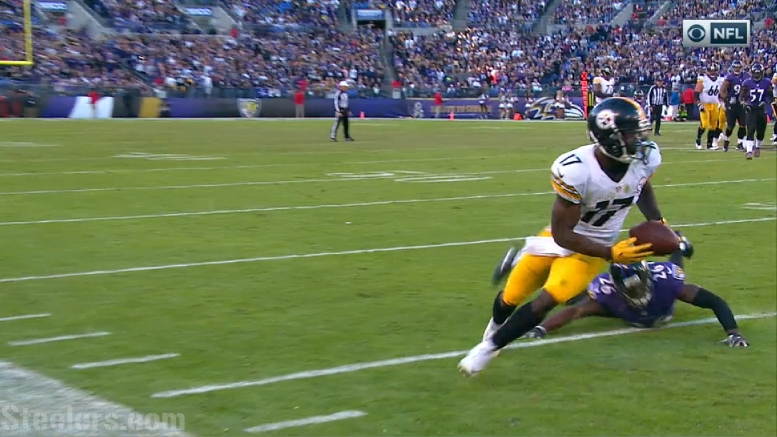In the season opener, Eli Rogers—technically a second-year player, but in many ways essentially a rookie after spending his first season with the Pittsburgh Steelers on injured reserve before even participating in a preseason game—caught six passes for 59 yards and a touchdown.
Over the course of the following two games, he caught three passes for 41 yards. He suffered a foot injury in the middle of that second game, however, which sidelined him for the following two games, and he only returned to the field in Week Six in Miami. In that game, he caught four passes, but for just 35 yards. The next week, he was benched for disciplinary reasons.
The preseason hype initially seemed to be well justified based on his success in the season opener, but from Week Two through the bye week, he caught just seven passes for 76 yards. Even when considering that that span of time only accounts for about two and a half games of playing time, that is still a low amount of playing time.
That is partly why Rogers’ showing on Sunday against the Ravens was so important, during which he actually led the team in receiving yards, catching six passes—tying a career high—for 103 yards, in doing so becoming the third different wide receiver of the season to record a 100-yard receiving game.
One thing that I think was interesting is the fact that Rogers was targeted heavily late in the game, specifically on the Steelers’ long drive in the middle of the fourth quarter on which they ended up turning the ball over on downs.
He saw 10 total targets in that game, and half of those targets came on that drive, but he caught only two of them for a total of 52 yards. He also caught a 29-yard pass on their final scoring drive, and earlier in the quarter caught three passes for 22 yards. All six of his receptions, in fact, came in the fourth quarter.
That is actually a change, as in his previous games with multiple receptions—particularly the season opener—most of his action came early, and the offense seemed to move away from him as the game wore on. This time, with the offense desperate to climb back into the game, he was targeted nine times with a 13- or 21-point deficit.
It should be noted that all four of the incomplete passes thrown in Rogers direction were the result of bad throws by Ben Roethlisberger, and, in fact, these throws were particularly bad. Two of those passes could have been easily intercepted, while a third was a pass Rogers could only get outstretched fingertips on, and, with the tip, was also almost intercepted.
This was an important re-establishing game for Rogers, who showed when the Steelers, and Roethlisberger, needed him to be reliable the most, was just that, and that bodes well for the future of his development as a useful part of this offense.






